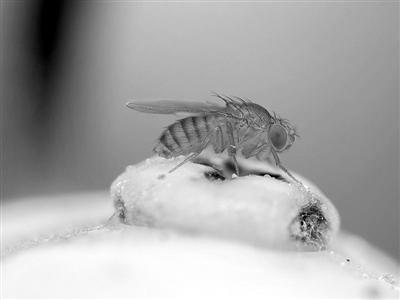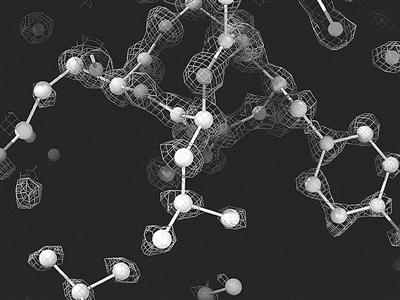2020 is destined to be an extraordinary year.
Coronavirus pandemic may slow us down, but the development of science and technology will never stop. In a blink of an eye, 2020 is drawing to a close, and the British “Nature” website recently named the top ten important scientific discoveries of this year, the last of which is the most popular scientific discovery this year.
The first evidence of the mystery of the origin of matter in the universe
The particle-antiparticle mirror symmetry is also called charge conjugate parity inversion symmetry (CP symmetry). The group of elementary particles called fermions includes leptons containing elementary particles such as electrons, muons, Taozi and neutrinos. A study by the Japanese T2K Neutrino Cooperation Group found that there is a CP symmetry break in the leptons.
This breach is difficult to capture and observe, but neutrinos can be used to search. There are three types of neutrinos (“flavors”), depending on their related charged leptons (electrons, muzi, and Taozi), which can change from one “flavor” to another in the process of propagation .
Studies have shown that the probability of a muon-type neutrino transforming into an electronic neutrino is higher than the frequency of a muon-type antineutrino transforming into an electronic antineutrino, and there are signs that the behavior of positive and negative neutrinos is different. This may be the first evidence explaining the origin of slightly more matter than antimatter in the universe.
“Montreal Protocol” “heals” ozone “wounds”
In the mid-1980s, the discovery of a hole in the atmospheric ozone layer over Antarctica in the spring showed that the anthropogenic emissions of ozone-depleting substances pose a threat to the ozone layer.
The Antarctic ozone hole is located at an altitude of about 10-20 kilometers, which not only affects the atmospheric circulation in the southern hemisphere, but also shifts the mid-latitude jet stream and the arid area on the tropical edge to the south pole.
The 1987 Montreal Protocol and its subsequent amendments prohibit the production and use of ozone-depleting substances. Therefore, the concentration of ozone-depleting substances in the atmosphere is declining, and preliminary signs of ozone layer recovery have appeared.

Studies have shown that since the start of ozone recovery, the void-related circulation effects have been suspended. This effect is a direct result of countries’ implementation of the Montreal Protocol.
Satellites may soon map every tree on earth
Martin Brandt and others reported an analysis of high-resolution satellite imagery covering more than 1.3 million square kilometers of the Sahara and Sahel in West Africa. They mapped the location and size of approximately 1.8 billion tree crowns.
Before that, scientists had never mapped trees in such a large area with such a detailed level.
Commercial satellites have begun to collect data and can capture ground objects of one square meter or smaller. This has made a fundamental leap in the field of terrestrial remote sensing: from focusing on the measurement of comprehensive landscape scales, it is possible to map the location and canopy size of each tree on a large regional or global scale.
This progress will undoubtedly drive a fundamental change in the way we think, monitor, model, and manage global terrestrial ecosystems.

“Your circle is really chaotic”: Incest found in Irish prehistoric elite cemetery
The Newgrange tomb in Ireland has a history of 5,000 years. This large and exquisite tomb is believed to be built for a powerful elite. Laura M. Cassidy and others studied the social structure of farming settlements and focused on the people buried in the passage tombs.
The construction of Newgrange’s tomb used complex engineering to ensure that at the end of the long stone passage around the winter solstice each year, a tomb room would be illuminated by the rising sun for a few minutes.
The ancient DNA in human remains found there revealed an unexpected and extremely rare incident of incest. About 5000 years ago, a man was buried in the tomb of Newgrange. He was the offspring of a first-degree incest marriage: his parents were either brothers and sisters, or mother and son or father and daughter.
This discovery led the research team to speculate that the elites sleeping in this magnificent ancient tomb used incest as a way to maintain the royal blood.
Activate and kill HIV lurking in the cell
HIV (AIDS virus) may hide in cells in a latent form with little or no transcription, so the immune system cannot detect it. The “activate and kill” therapy designed by scientists aims to reverse this incubation period and increase the expression (activation) of virus genes, making the cells hiding the virus easily killed by the immune system. Two research papers describe unique interventions in animal models.
One of them was completed by Nixon and others. They used a drug called AZD5582, which activates the transcription factor NF-κB (the main promoter of HIV-1 gene expression). The other one was completed by McBrian and others.
They combined two immune interventions: antibody-mediated CD8+ lymphocytes (immune cells that reduce the level of viral transcription) and a type of N-803 that can activate HIV-1 Transcription of drugs. These two interventions may be the most robust and reproducible interruption of the virus incubation period to date.
In addition, the study also demonstrated the conceptual and technical challenges related to the reversal of the pharmacological latency.
Why are fruit flies picky eaters? The secret of gene editing tools
The fruit fly named Drosophila sechellia is a close relative of Drosophila melanogaster. It only feeds on the poisonous noni fruit (Morinda citrifolia).
Compared with its food all-rounder relatives, what makes this species so picky? Thomas O. Orr and others used the gene editing tool CRISPR-Cas9 to crack this case.
The study found that this kind of Drosophila has more sensory neurons that express the odorant receptor protein Or22a than other Drosophila species. Small changes in the amino acid sequence of this protein lead to Drosophila’s preference for noni fruit.
The researchers also identified some other evolutionary changes that could lead to this seemingly simple change in behavior. It seems that even small flies that like foul-smelling fruits can provide us with powerful insights into how the brain has evolved to shape complex behaviors.
The unsolved mystery of the Milky Way: the source of fast radio bursts is determined for the first time
In three papers published in the journal Nature, scientists have determined for the first time the origin of a fast radio burst in the Milky Way. Interestingly, fast radio bursts are also accompanied by a series of X-rays.
This discovery was obtained and understood by piecing together observations from multiple space-based and land-based telescopes. The name “rapid radio bursts” is a good description of what they mean: bursts of bright radio waves with a duration of roughly milliseconds.
Fast radio bursts were first discovered in 2007, and their short-lived nature makes it challenging to detect them and determine their positions in the sky.
This is the first fast radio burst to detect radiation other than radio waves, the first to be discovered in the Milky Way, and the first fast radio burst related to the stellar remnants called magnetars. This proves that magnetars can be the origin of fast radio bursts.
Interferon deficiency may lead to severe COVID-19
Individuals with genetic mutations in the interferon induction pathway will benefit from interferon treatment.
In addition, people with interferon-α and interferon-ω neutralizing antibodies may benefit from the provision of other types of interferon treatments, such as interferon-β and interferon-λ.
The paper published in the journal Science revealed a key factor in whether the new coronary pneumonia continues to develop.
Studies have shown that defects in interferon proteins, especially type I interferons, may be caused by genetic mutations in genes encoding key antiviral signal molecules, or because antibodies bind to type I interferons and “neutralize” the interferons.

How does type I interferon response defect lead to life-threatening new coronary pneumonia?
The most direct explanation is that the lack of type I interferon has caused the virus to replicate and spread out of control. However, the lack of type I interferon may also have other consequences for immune system function.
Milestone: Cryogenic electron microscope breaks the barrier of atomic resolution
A basic principle of structural biology is that once researchers can directly observe large molecules in sufficient detail, it should be possible to understand how their three-dimensional structure gives them biological functions.
Scientists published a paper in Nature reporting the clearest image obtained using a single-particle cryo-electron microscope, which made it possible for the first time to determine the position of a single atom in a protein.
Researchers have promoted the development of cryogenic electromagnetic hardware, and have also promoted major advances in single-particle cryogenic electromagnetic resolution.
Each research team uses hardware to handle different aspects of cryogenic electromagnetic imaging, which previously limited the achievable resolution. Using these technologies, the improvement of low-temperature electromagnetic image signal-to-noise ratio will expand the applicability of this technology.
Perhaps the fusion of these technologies will allow us to determine the cryo-electromagnetic structure even with a resolution of more than one angstrom, which seemed impossible before.
Under “stress”, hair will really turn white
It may be true that it may happen overnight, and people usually think that it is most likely caused by stress. The color of hair is determined by melanocytes, which are derived from melanocyte stem cells in the hair follicle called the bulge of the hair follicle.
A research report published by Zhang Bing and others in the journal Nature showed that norepinephrine (a neurotransmitter molecule involved in the “fight or flight” response to stress) is a sympathetic nervous system that protrudes from innervation Released from neurons.
When under extreme pressure or exposed to high levels of norepinephrine, the proliferation and differentiation of melanocyte stem cells increase significantly, resulting in a large number of melanocytes migrating away from the bulge, and there are no remaining stem cells to replace them, which leads to stem cells The exhaustion, which causes the hair to turn gray and then white.
This discovery reveals for the first time the specific mechanism of gray hair caused by stress.
In addition to the development of anti-aging therapies, the team’s research work is expected to help better understand how stress affects the location of other stem cell pools and cell niches.



